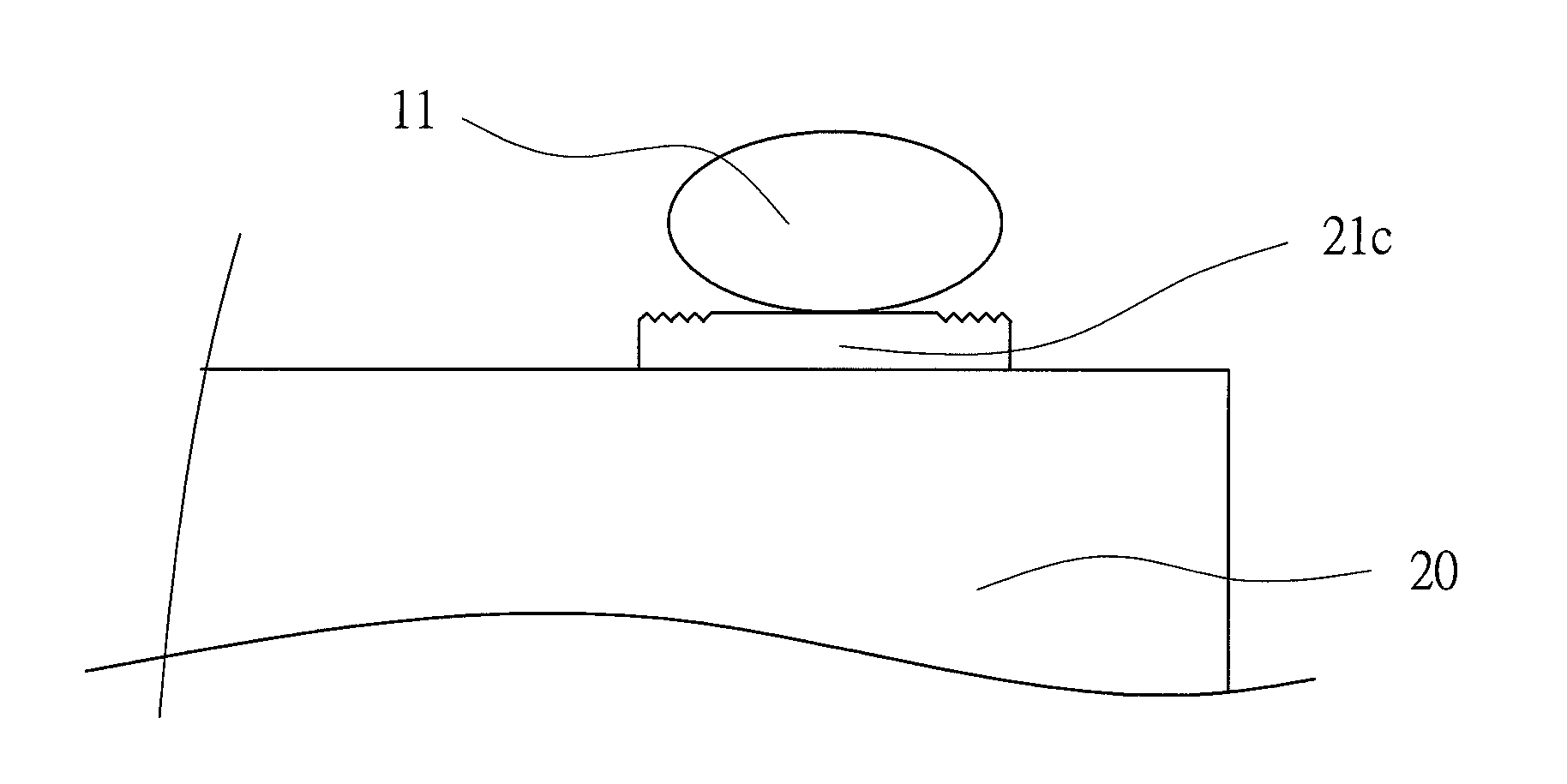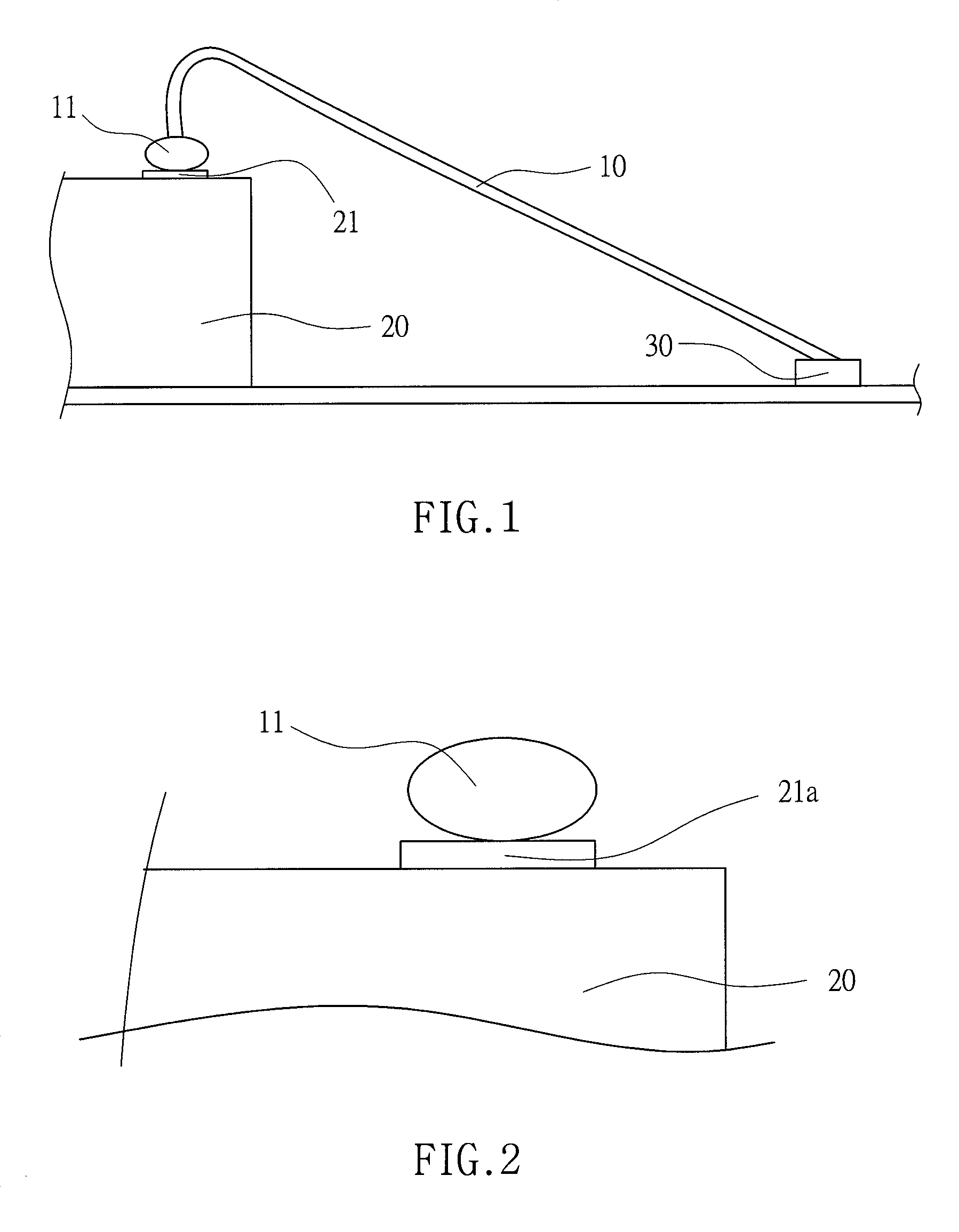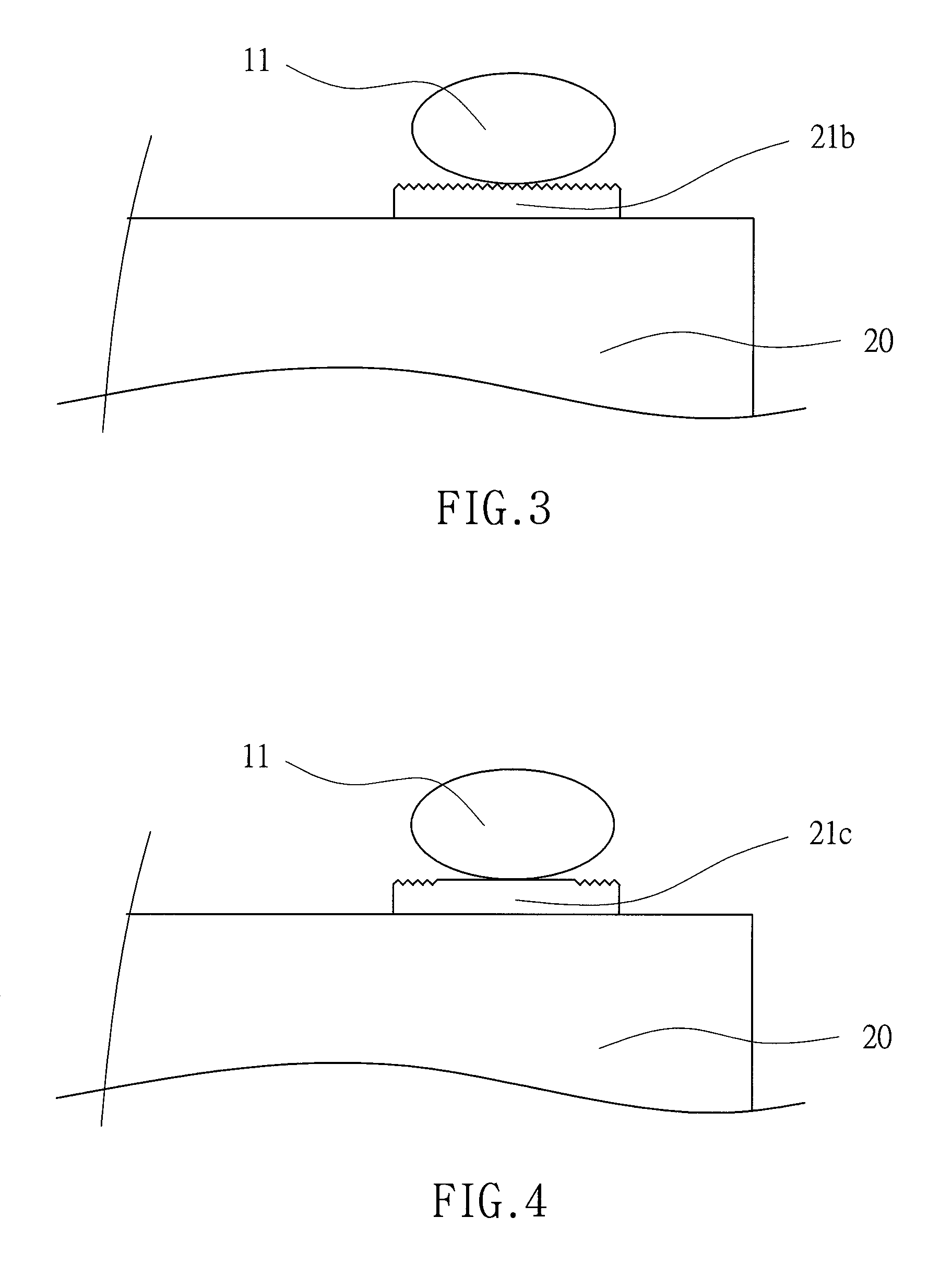Semiconductor chip pad structure and method for manufacturing the same
a semiconductor and chip pad technology, applied in semiconductor devices, semiconductor/solid-state device details, electrical apparatus, etc., can solve the problems of affecting the electric reliability, and affecting the yield rate of led packaging elements
- Summary
- Abstract
- Description
- Claims
- Application Information
AI Technical Summary
Benefits of technology
Problems solved by technology
Method used
Image
Examples
Embodiment Construction
[0025]First of all, referring to FIG. 2, the surface of the terminal pad 21a of a conventional semiconductor chip 20 is designed to be a flat surface. As shown in FIG. 3, a terminal pad 21b having a roughened surface is positioned on the same surface layer (such as LED light-emitting layer) of the semiconductor chip 20. The results of the wire-bonding process applied to the ball bond 11 of the two above-mentioned arrangements indicate that the terminal pad 21b having the roughened surface may resist more against the ultrasonic vibration than the terminal pad 21a having the flat surface. The reason lies in that the transverse transmission of energy tends to be hindered by the roughened surface. In other words, it is difficult to transmit the vibrating energy of the ultrasonic wave from both sides of the terminal pad 21b having the roughened surface to the bottom. Therefore, it is more unlikely to cause crack or cratering of the chip (with the terminal pad 21b having the roughened sur...
PUM
 Login to View More
Login to View More Abstract
Description
Claims
Application Information
 Login to View More
Login to View More - R&D Engineer
- R&D Manager
- IP Professional
- Industry Leading Data Capabilities
- Powerful AI technology
- Patent DNA Extraction
Browse by: Latest US Patents, China's latest patents, Technical Efficacy Thesaurus, Application Domain, Technology Topic, Popular Technical Reports.
© 2024 PatSnap. All rights reserved.Legal|Privacy policy|Modern Slavery Act Transparency Statement|Sitemap|About US| Contact US: help@patsnap.com










